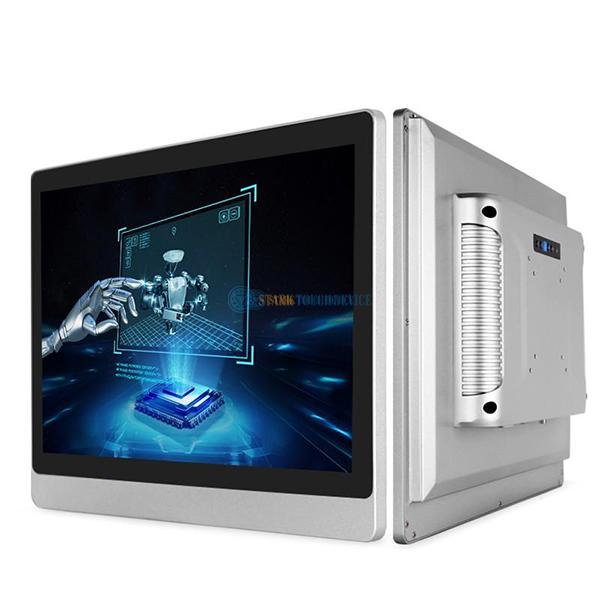Welcome STARK TOUCH DEVICE!
Solutions
Optimization and handling methods for Software lag in industrial control computers
Optimization Methods for Stuttering Issues in Industrial Computer Software
Industrial computers are core devices in industrial automation systems, and software stuttering can directly affect production efficiency and system stability. Addressing this issue requires a multi-pronged approach covering hardware, software, and system configurations.

1. Hardware Resource Optimization
1.1 Processor Performance Enhancement
The processor is the computational core of industrial computers. In multi-task scenarios, traditional embedded processors often struggle with performance bottlenecks. Upgrading to multi-core, multi-threaded high-performance processors can significantly improve processing capabilities. For example, in smart factory production line monitoring systems, adopting high-end processors can handle data collection, equipment status monitoring, and anomaly alerts simultaneously. Tests show a 30%+ improvement in task processing speed compared to older processors, effectively reducing stuttering.
1.2 Memory Expansion and Optimization
Insufficient memory is a common cause of multi-task stuttering. When running multiple programs simultaneously, frequent virtual memory usage slows down the system. Expanding memory to 16GB or 32GB and using high-frequency DDR4 modules (3200MHz or above) can resolve this. In industrial big data analysis scenarios, 32GB high-frequency memory enables smooth operation of data analysis software, database management systems, and visualization tools, eliminating task-switching delays.
1.3 Storage Device Upgrade
Traditional mechanical hard drives have slow read/write speeds and become performance bottlenecks in multi-task data operations. Replacing them with solid-state drives (SSDs) improves data access speeds by tens of times. In industrial automation control systems, SSDs reduce system startup time to under 10 seconds and accelerate data read/write during equipment control and log recording, ensuring stable operation.
2. Software Layer Optimization
2.1 Memory Management Precision
In industrial control software (especially C#-based systems), automatic memory management can cause performance issues. High-frequency data collection (e.g., 10ms intervals) generates massive temporary objects, increasing garbage collection (GC) pressure. Optimization techniques include:
Object Pooling: Using
ArrayPool<T>to reuse arrays instead of creating new ones for each data collection cycle.Struct Types: Replacing class types with struct types for sensor data to avoid heap allocation.
Boxing Avoidance: Using generic methods (
LogValue<T>) instead ofobjectparameters to prevent value-type-to-reference-type conversions.
These methods reduce memory allocation rates from 12MB/s to 0.5MB/s and GC frequency from 5 times/second to once every 30 seconds.
2.2 Algorithm and Code Optimization
Loop Reordering: Changing nested loop orders to improve cache utilization (e.g., swapping outer/inner loops in matrix operations).
Function Consolidation: Replacing repetitive code blocks with reusable functions.
Data Structure Simplification: Using arrays instead of lists for fixed-size data to avoid dynamic resizing overhead.
In a vehicle control system case study, replacing retain scripts with variable persistence attributes reduced Linux system load averages by 28.6% and CPU usage by 7.33%.
2.3 Task Scheduling and Priority Management
Process Lasso: This tool dynamically adjusts CPU and memory priorities for critical tasks. In industrial data acquisition systems, it balances resource allocation between data collection and processing tasks.
Real-time Task Prioritization: Setting safety control tasks as high priority ensures timely responses in automated production lines.
3. System Configuration and Maintenance
3.1 Operating System Tuning
Service Disabling: Closing non-essential Windows services (e.g., Windows Search, Superfetch) through the "Services" management console.
Virtual Memory Configuration: Placing pagefiles on SSDs and adjusting sizes based on memory usage patterns.
Startup Program Management: Using Task Manager to disable unnecessary auto-start applications.
3.2 Driver and Firmware Updates
Regularly updating device drivers (e.g., graphics cards, network adapters) and industrial control software fixes compatibility issues and performance defects. For example, a graphics driver update improved industrial simulation software rendering speed by 20%.
3.3 Thermal Management
Passive cooling systems in fanless industrial computers require efficient heat dissipation:
Vapor Chambers: Using liquid evaporation-condensation cycles to distribute heat evenly.
Microchannel Cooling: Increasing heat exchange efficiency through micro-sized channels in heat sinks.
Thermal Interface Materials: Applying high-conductivity silicone pads and nano-coatings to improve heat transfer.
In server room monitoring applications, vapor chambers reduced CPU temperatures by 10-15°C under high loads, preventing thermal throttling.
4. Network and Communication Optimization
4.1 Bandwidth Allocation
QoS Policies: Prioritizing critical control traffic in industrial networks.
Protocol Optimization: Using efficient industrial buses (e.g., Modbus TCP, OPC UA) and adjusting packet sizes/update intervals.
4.2 Topology Simplification
Reducing network hops by optimizing switch placements and avoiding redundant routing. In a multi-device automation system, this reduced communication delays by 40%.
Implementation Pathway
Diagnostic Phase: Use tools like Task Manager and PerfView to identify resource bottlenecks (CPU, memory, disk I/O).
Hardware Upgrade: Prioritize memory and storage improvements based on diagnostic results.
Software Optimization: Apply memory management and algorithm refinements.
System Tuning: Configure OS parameters and cooling solutions.
Continuous Monitoring: Establish performance baselines and conduct regular stress tests.
By combining these strategies, industrial computer systems can achieve stable multi-task operation with sub-2ms response times in critical control scenarios, meeting the stringent requirements of modern智能制造 environments.


